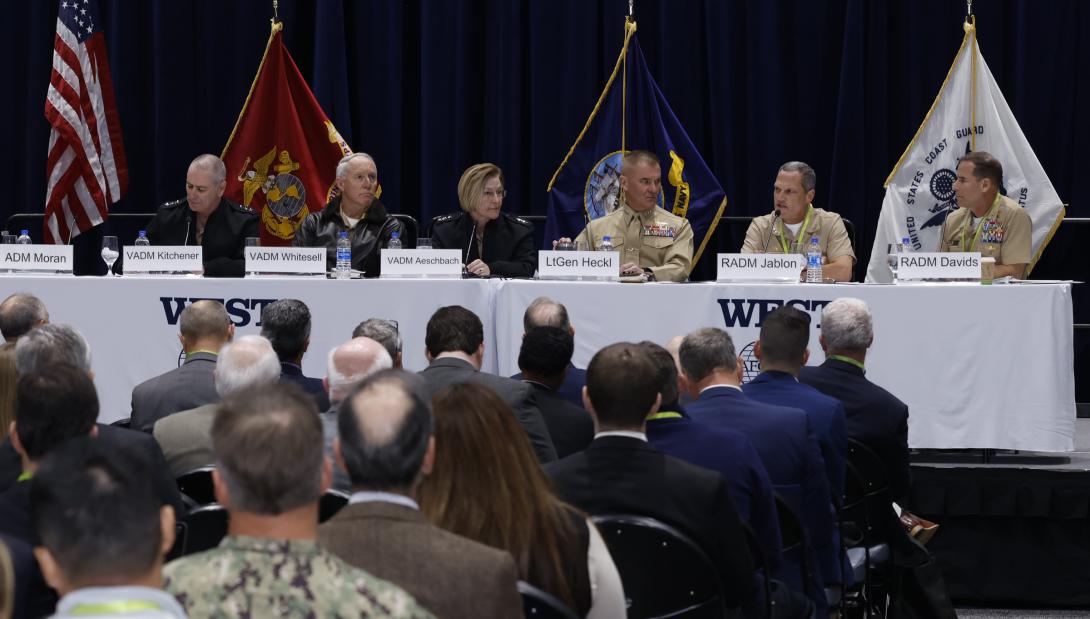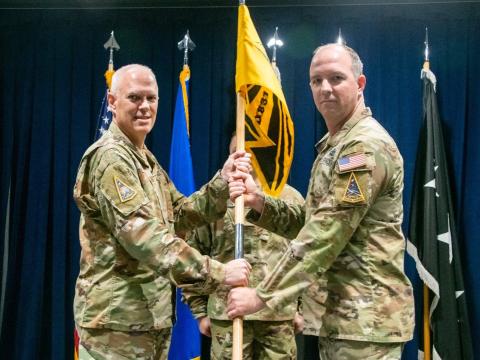New Technology for Future Warfighting
Navy and Marines leaders spoke about the development of future capabilities forces in the Pacific and how it will impact potential future skirmishes. The panel at WEST 2023 brought their experience and appealed to industry leaders to increase the quantity and speed of new products and updates.
Algorithms have proven to be best suited for intelligence, according to Rear Adm. Keith Davids, commander of the U.S. Naval Special Warfare Command.
Addressing the increasing volumes of data, he explained, “It’s too much and we can’t process and exploit it.” Smart use of artificial intelligence, for example, helps specialists identify patterns to spot adversarial behaviors, according to Adm. Davids.
“We are looking at integration and how we integrate more autonomy and machine learning support for our forces, particularly to free our intellectual capacity, to focus on what’s most important,” said Vice Adm. Kelly Aeschbach, commander of the U.S. Navy Naval Information Forces.
Rear Adm. Jeffrey Jablon, commander of the Submarine Force, U.S. Pacific Fleet, told the audience a squadron of unmanned undersea vehicles (UUVs) was adopted.
“One of the things that we are focusing on is subsea, seabed, warfare,” Adm. Jablon explained. This would be a new offensive capability. Another capability his command is working on is launching UUVs through torpedo tubes.
Vice Adm. Kenneth Whitesell, commander, Naval Air Forces and commander, Naval Air Force, U.S. Pacific Fleet, discussed the trends in flights: “employ manned-unmanned teaming.”
Adm. Whitesell clarified these capabilities were in their infancy, as much must be learned.
The panel also discussed how drone capabilities evolved to the point that one operator flying seven devices was tested, keeping humans in the operation and kill decision process.
This issue of automating enemy neutralization divided the panel.
“Robotics seems to be emerging for me as an area that shows real potential. I think on a lot of the decisions we’re talking about, where there’s going to be a decision point, is going to be an ethical decision about unmanned killing of human beings without somebody in the loop,” said Lt. Gen. Karsten Heckl, commanding general, U.S. Marine Corps Combat Development Command.
Where the panel was in full agreement was in the visible trend of using robots for logistics, from unmanned vessels to other delivery platforms to keep forces supplied.

People are our systems and information warfare.
Stressing the difficulty recruiting and training personnel, the panel addressed a series of policy changes. This included designing better career tracking and efforts to deliver timely training.
“People are our systems and information warfare,” said Adm. Aeschbach.
“We are pressing hard to get into live, virtual, constructive, training environment, because as many of you know, information warfare capabilities are typically the type of capabilities that we either don’t have the authorization to fully exercise, in our own airspace and waters,” said Adm. Aeschbach, explaining that forces need to train in a metaverse because training in areas close to civilians could be disruptive to civilians and in international jurisdictions adversaries could eavesdrop to spy on the country’s capabilities.
Vice Adm. Roy Kitchener, commander of the Naval Surface Forces and the Naval Surface Force, U.S. Pacific Fleet, also participated in the “Man, Train and Equip Perspective: What are the ‘Goods’ and ‘Others’ on Readiness, Capability and Capacity?”
Adm. William Moran (Ret.), former vice chief of Naval Operations, moderated the conversation.





Comments